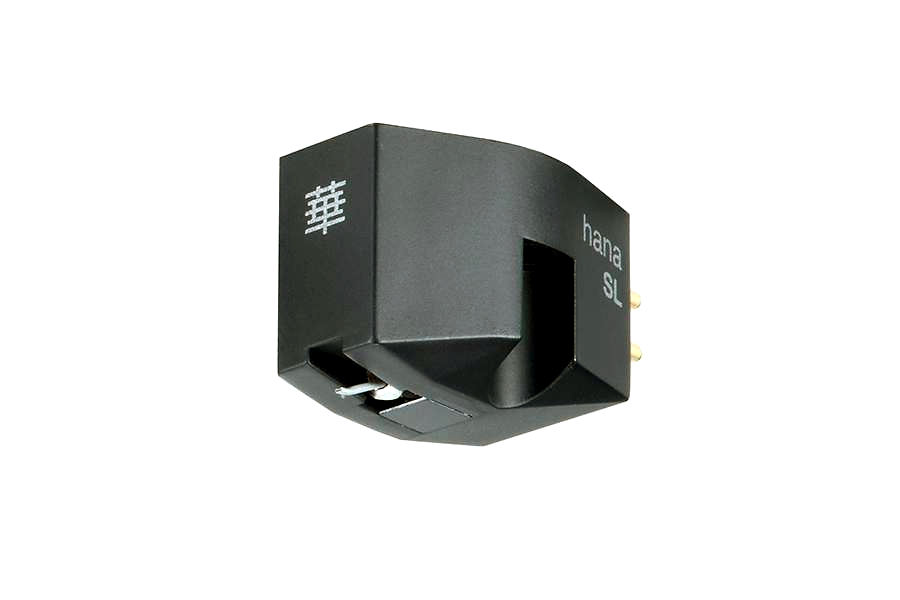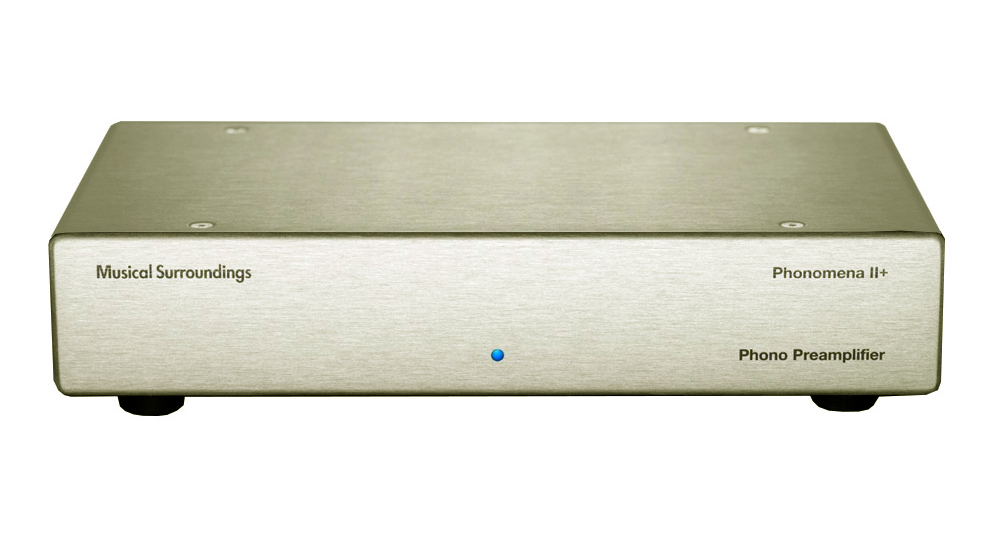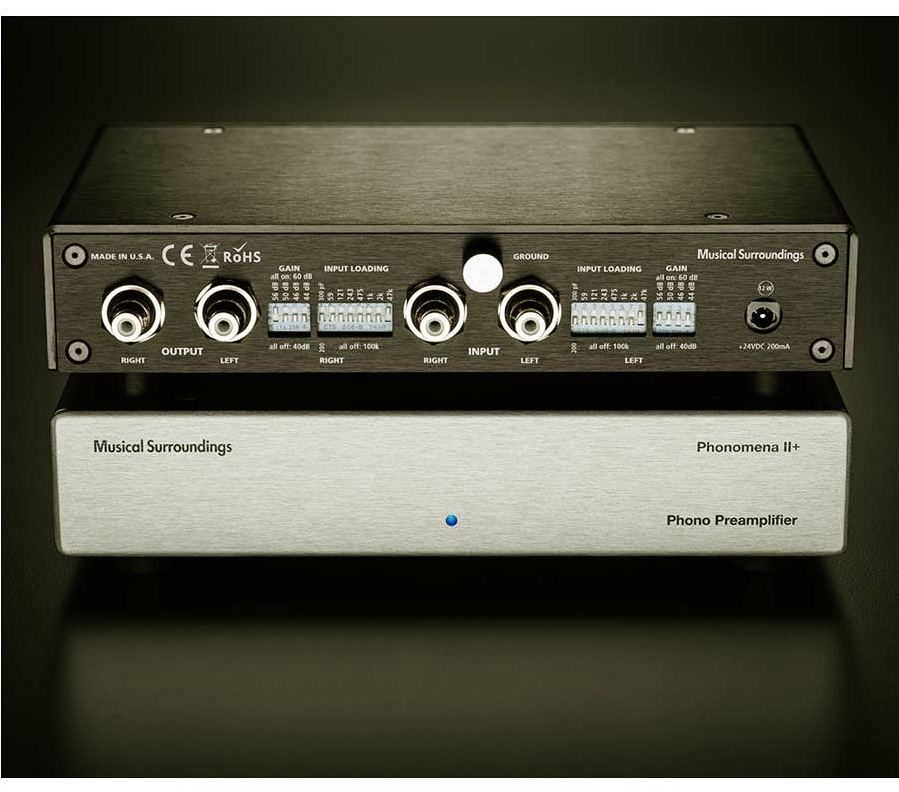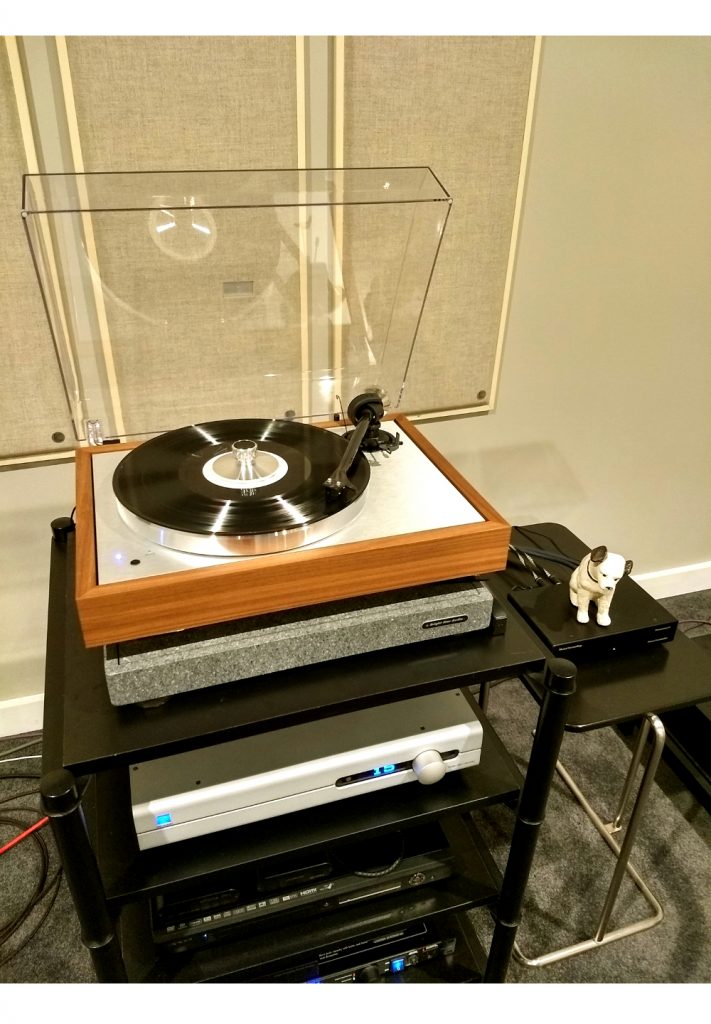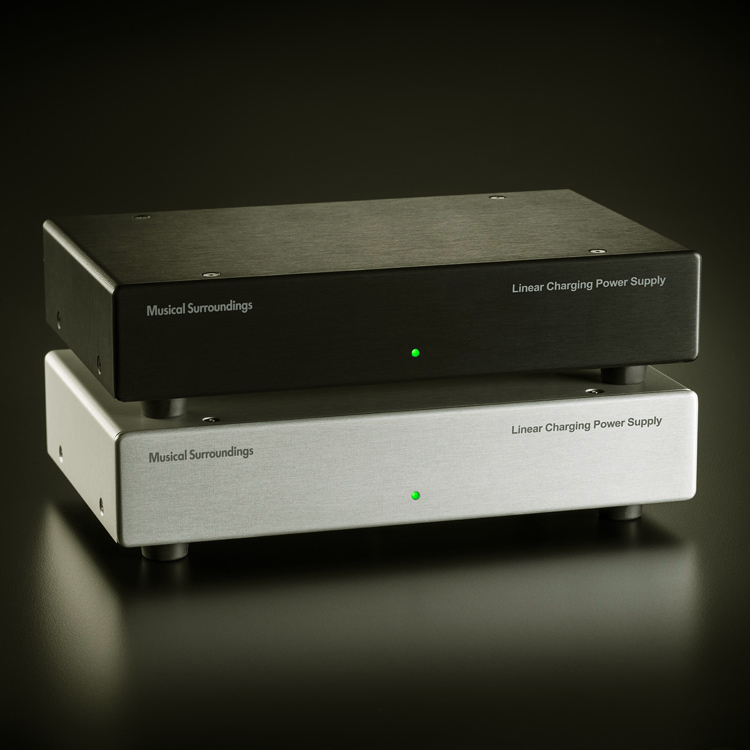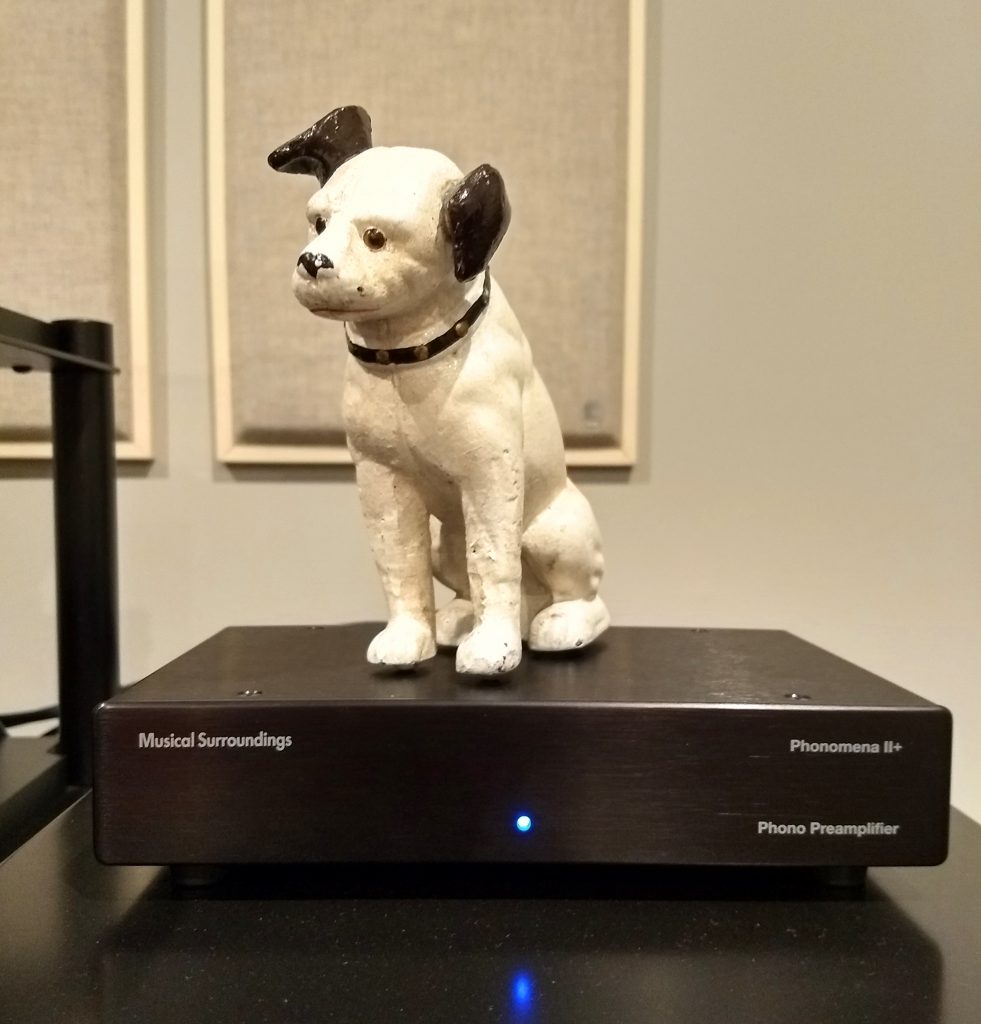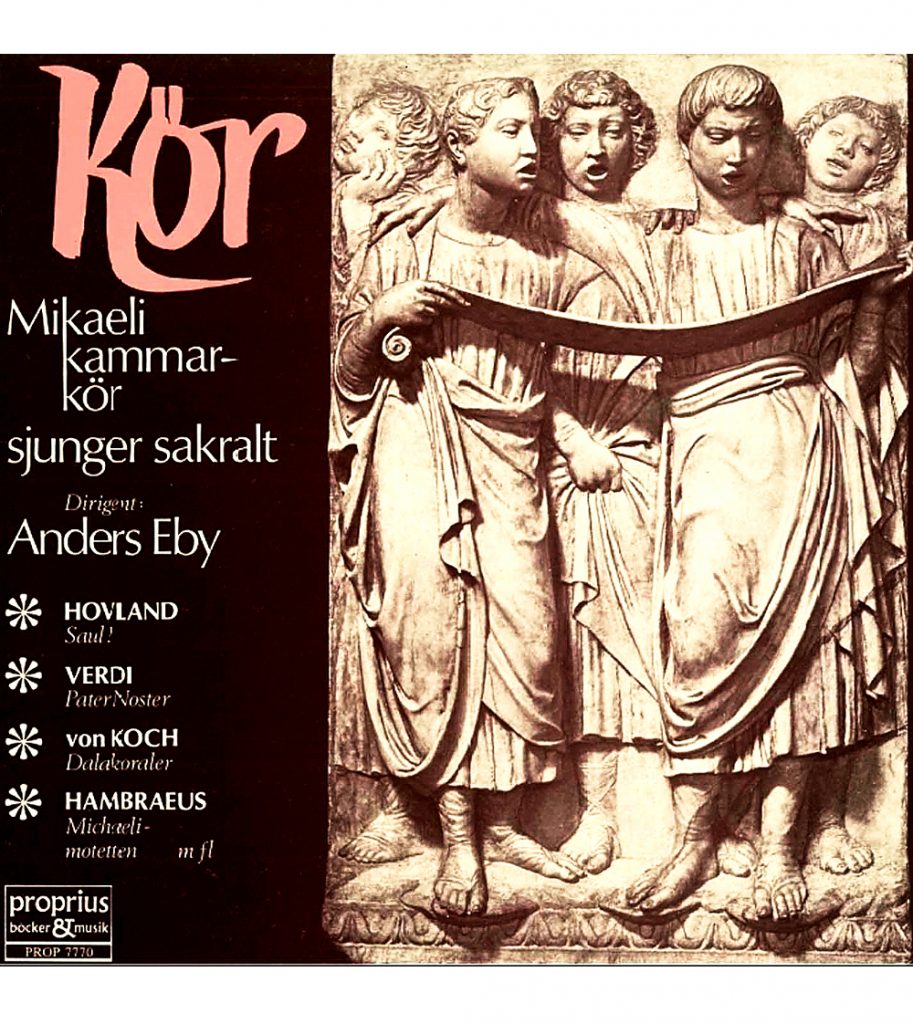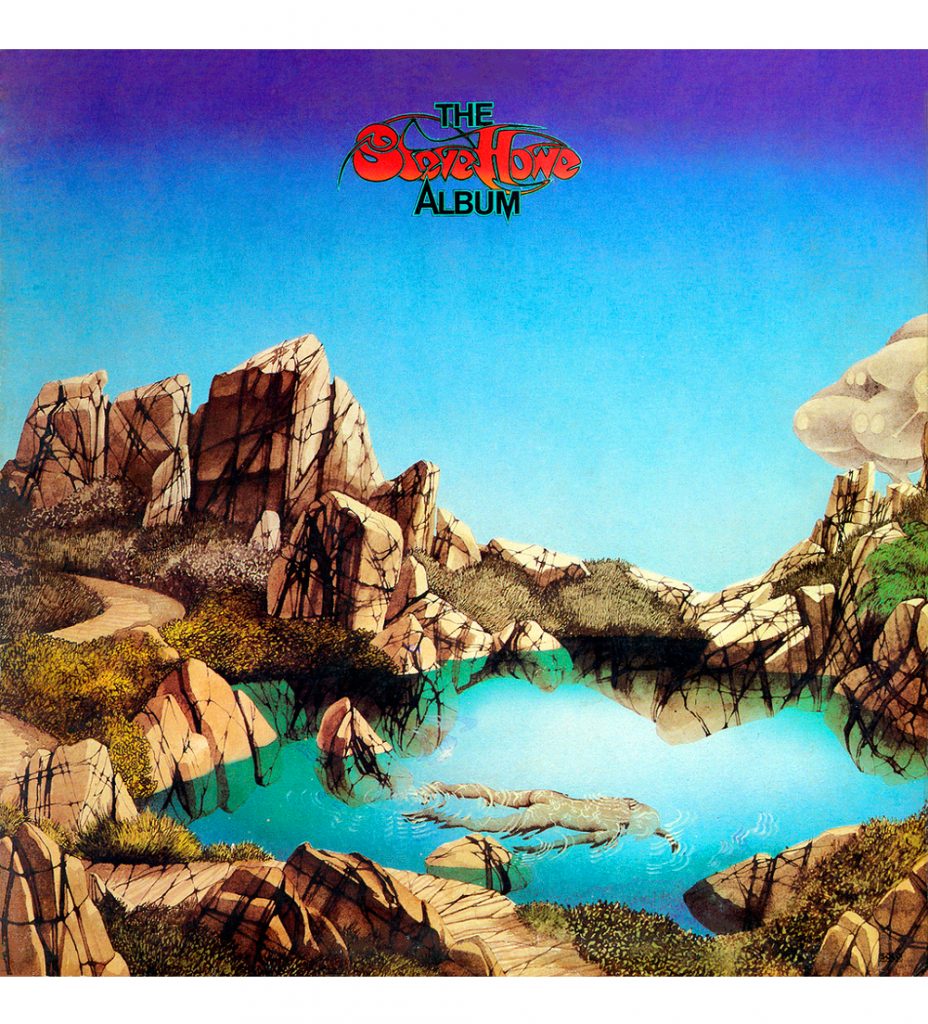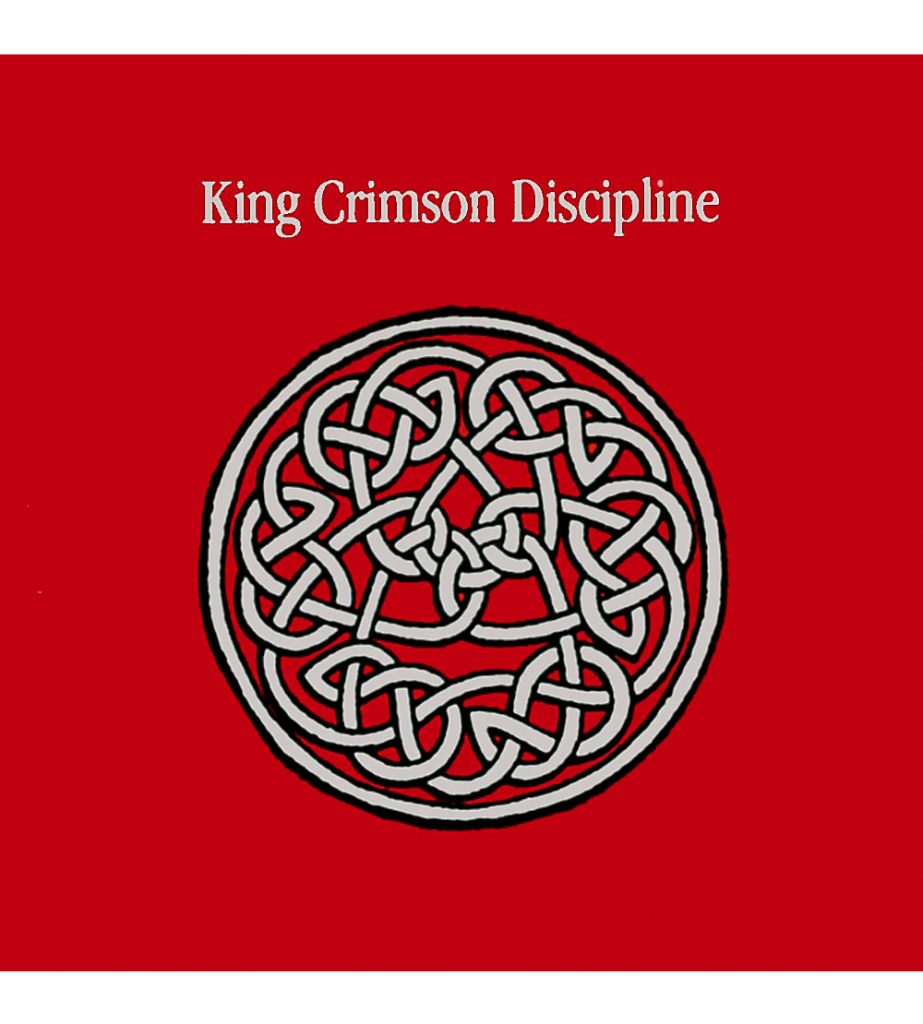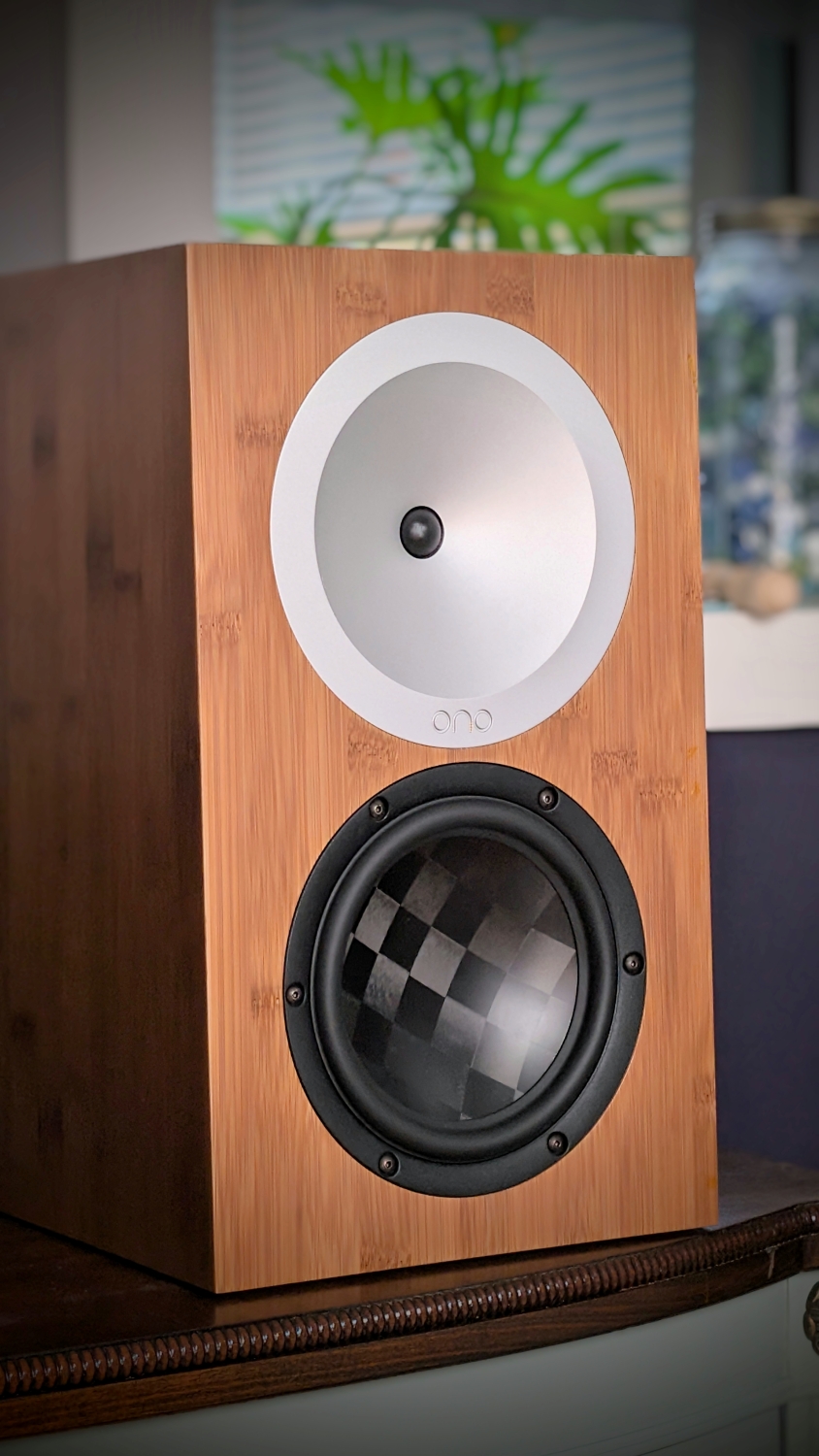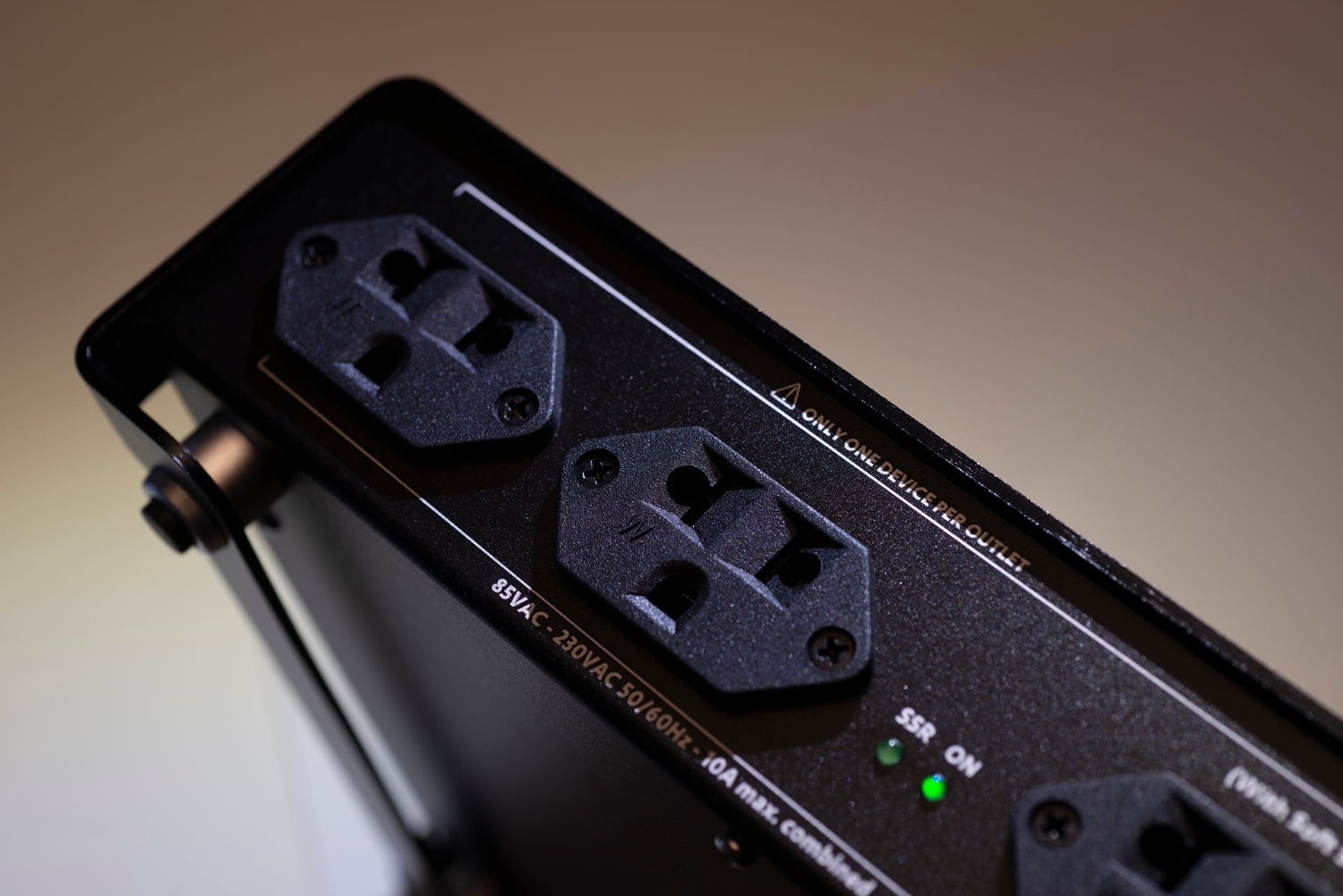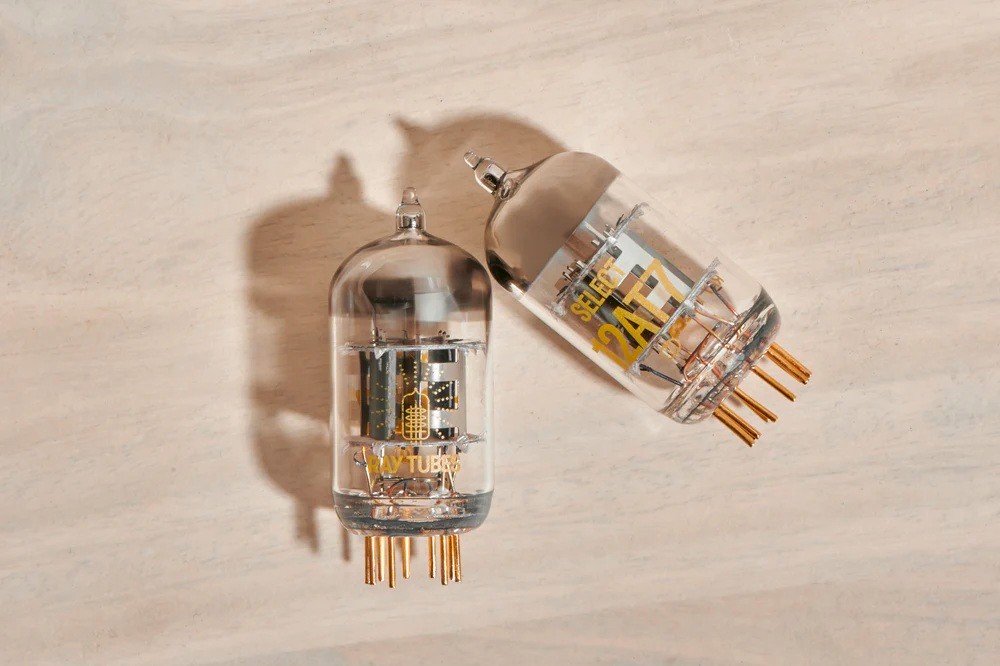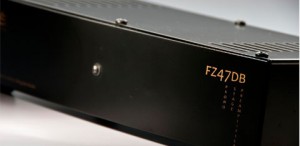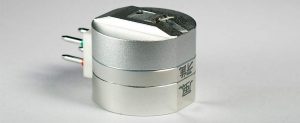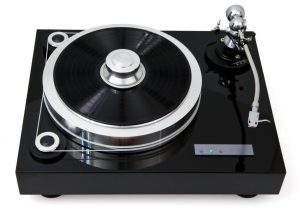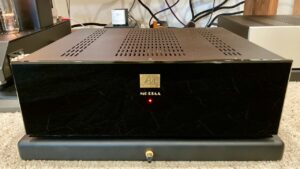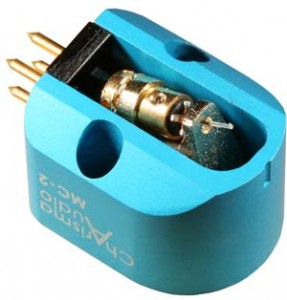I love the new world of digital file streaming; I love the convenience of accessing your entire music library at the touch of a few tablet buttons, and I love the fact that digital-to-analog conversion has reached a state of near perfection that early digital only hinted at. And with so many outstanding tools at our disposal, such as Roon, with its remarkable distillation of music player/file organizer and an unbelievable suite of bit-perfect digital signal processing at your disposal—what's not to love? Good digital playback has never been more affordable and accessible to so many, and the very finest digital recordings evoke an emotional response in me that, until now, I'd never have believed possible.
What I don't love is that, inevitably, every remarkably good session of enjoyable listening to great digital sources seems to be followed by a frequently mediocre sounding, less involving one. One where the music seems to suffer from a lack of transparency, warmth, and delicacy. Probably due to a substandard remastering job, but often leading me to speculate that my unhappiness is probably linked to poor amplifier or speaker choices. Questioning that my current audio setup—that I've worked so very hard to build and cultivate—just isn't up to snuff in terms of giving me the kind of aural satisfaction I so desperately crave. It's an often maddening cycle of love and hate.
All that is necessary to instantly ameliorate the situation is to put on an LP record, and everything is miraculously restored to perfect order. Every. Single. Time. Listening to LPs gives you, well, all the hallmarks of great analog listening that so many have written so much about—and increasingly since the advent of the compact disc. I no longer doubt the validity of my system, and its ability to offer true musical satisfaction—especially since the arrival of the Hana line of phono cartridges. I had the very great pleasure of reviewing the Hana EL low-output moving coil cartridge last year; as one of the resident "good sound on a budget" reviewers here at PF, I found it to be a remarkable upgrade to my enjoyment of analog playback. And a tremendous bargain, providing the kind of superb LP playback one could only dream about at the price point. The sympatico between the Hana EL and my ProJect The Classic turntable—through the Sutherland KC Vibe Phono Pre I had in-house at the time—was so good, that the sound it extracted from my LPs was, well, seductively engaging. You can read my full review HERE. Afterwards, Garth Leerer of Musical Surroundings was very keen to have me evaluate not only the pricier Hana SL, but also their own Phonomena II+ phono preamp.
I'd been working with the really excellent Sutherland unit that was still on hand for several months. While its build quality and functionality are very similar to that of the Phonomena II+, and it's supplied with a pretty beefy power transformer, its price point is about $125 higher. It's a truly superb performer—better than any phono pre I'd had access to in a very long time, and I was very happy to see a Sutherland phono preamp finally break below the $1K USD mark. But as someone who, out of necessity, changes phono cartridges fairly frequently, I ultimately found having to regularly remove the outer cover to internally adjust the jumpers controlling the load and gain settings a bit of a chore. The Hana EL really sang through it, but I was curious to see how, and if, the Phonomena II+ might change my already sterling impression of the overachieving Hana EL cart.
The Phonomena II+ is made by Musical Surroundings in the US at their Oakland, California location. In terms of construction fit and finish, it's a beautifully made product; it's all-metal chassis was recently improved upon, now more closely matching the appearance of their more expensive Nova series. It has a nice heft to it, and occupies about a half-rack space, measuring about 8.5 x 6 x 2 inches and weighs a tad over three pounds—its relatively diminutive size makes for easy placement on your rack. It's available in your choice of black or silver finish; based on an inspection of the interior circuit board (also recently upgraded), parts selection, and the quality of the available analog connections, it's totally a perfectionist piece of kit. And the flexibility offered for cartridge loading choices is superb; there are matching rows of dip switches for each channel on the rear panel to configure the input load and gain settings. I'd find it difficult to believe that there's a cartridge out there of high or low output that it couldn't accommodate. And I personally found the rear-panel settings convenience and increased flexibility to be a nice step up from the Sutherland unit.
If I had one initial complaint, it would be that the supplied external power supply (a really inexpensive-looking Chinese-made wall wart) was a bit cheesy, to say the least. Although I pride myself in my ability to scope out products that offer superior performance with excellent build for not-too-much dinero, in recent years, I've really begun to take a much harder look at power supplies, cords, and connections. While I won't immediately disqualify a unit for an inferior power supply, I generally have found that improving even just the cord, or in the case of a unit supplied with a wall wart—replacing it with a linear power supply—yields significantly improved results. I fully realize the Phonomena II+ is essentially a budget product—with very serious high-end pretensions—but even a slightly improved power supply would greatly enhance its perfectionist leanings.
I even did some research on the internet, in terms of trying to find an affordable, linear power supply option for the Phonomena II+; the fact that it uses a relatively uncommon voltage factor made that somewhat difficult. And while I did eventually purchase one from eBay, I found it all together unsatisfactory in day-to-day use, and ultimately just went with the included wall wart. That said, the II+ as supplied was perfectly quiet in terms of complete absence of any vibrational or electrical hum. I have two turntables (one of them set up for mono playback) and use two of the single-ended analog inputs on my PS Audio Gain Cell DAC/Preamp for turntable connection. The volume control displays from zero to 100, and a reasonable LP listening level for me is somewhere between 50 and 70, depending on the particular LP being played. At a volume level of 50 (roughly equivalent to about 80dB), with no LP being played, there's a very soft level of hiss being produced by the II+; at 70, it's significantly elevated. However, when a record is playing, the background level of the LP generally masks any hiss that might be present from the phono pre.
Cold, out-of-the-box with the Hana EL, I was immediately struck by several things: the soundstage width, depth, and height were significantly larger than what I had been experiencing with the Sutherland unit. But not so that they seemed unnaturally large—quite the opposite; everything seemed much more naturally and realistically proportioned. I was completely blown away by this; when standing in the rear of my room, if listening to a vocalist, the image position now matched my standing height—it was as is they were actually in the room. I've always struggled with the choice of sitting and standing when listening to music; I've always been struck that my experience of image specificity seems more accurate when I'm standing and listening. And with the II+, that image was, beyond doubt, the most convincing I'd ever experienced with any equipment in my room. Ever. But that wasn't all… .
I've noticed that a lot of reviewers are getting pretty beaten up online for our linguistic choices with regard to the listening room experience. And I'm sorry to resort to tired or trite metaphors to describe the experience of listening to music through the II+. But I'm basically an old-school guy—the II+ imbued whatever I was playing with the kind of liquidity that you just dream about. Especially music that contained vocal content; the presence of vocalists in the room became eerily realistic, and, well, present. As the II+ burned-in over the coming weeks, everything just kept getting better. And better. The Sutherland KC Vibe—which I'd been so happy with, and is somewhat more costly than the Phonomena II+—its performance now seemed, well, pretty plain vanilla in comparison.
Garth and I had talked, and one of the things that I had expressed was that I didn't want to get away from what I considered to be my comfort zone financially by reviewing items that I'd probably never consider based solely on their MSRP. I guess what has happened here is that, having experienced the Hana EL and the Phonomena II+, I've readjusted my relative scale of "budget" items to cover "anything below $1K USD." Which probably brings me in line (or much closer) to the audiophile reality. So, now, onward to the Hana SL cartridge!
Here, unfortunately, the wheels completely came off, resulting in about a bit of a detour from my plan. You can read about this in its entirety HERE, but I'll give you the encapsulated version. The unthinkable happened: I've replaced cartridges countless times—uneventfully—so I guess the odds were just stacked against me. While removing the Hana EL, I inadvertently broke off one of the cartridge clips in the headshell of my only months-old ProJect The Classic table. And the tonearm wiring is microscopic, to say the least. Faced with the very real possibility of having to ship the ProJect back to California, I reached out to a couple of connections via email and IM, Lee Scoggins (of Part-Time Audiophile, and local to me in Atlanta) and Michael Trei (turntable setup guru extraordinaire). Michael told me the fix was doable, but I'd need a specialized jig and superior soldering skills. Possessing neither, I followed Lee's lead and reached out to a couple of local sources. One of whom, Mike Burns of Wolfsong Audio, was on-point with pricing and the ability to make the repair—however, he was located about 100 miles away from me. It took a week plus to make it happen, but Mike expertly repaired the clip for me, and everything got back on schedule!
So now, we're finally listening to the Hana SL! Everything about the SL's basic build and performance mirrors that of the EL; a low-output moving coil cartridge with fairly specific loading needs (easily accomplished with the Phonomena II+). Same cartridge body, same weight factor—the big difference: the SL comes with a Shibata stylus tip attached versus the high-quality elliptical found on the EL. The Shibata tip configuration offers a much larger contact area with more even groove pressure, resulting in improved trackability and reduced record wear. Following Garth's recommendation for the SL, I have the tracking force set to 2.0 grams with The Classic table, and I'm maintaining the load settings of 400 ohms with a gain setting of 60dB. While the Shibata stylus will most definitely treat your records well, there's also the very real possibility that the condition of all your (especially older) records will be laid bare (and possibly not in a good way) by the SL. As usual, I mounted the SL using my Mobile Fidelity Geo-Disc cartridge alignment protractor, which has always given me good results. Here we go!
By this point, we're well into October of last year, when I was hit with a conflagration of craziness around the house. Things got super, super crazy at my day job; on top of that, my daughter decided to launch a serious remodeling project at their recently acquired home (I provide much of the muscle and, when necessary, sage advice). We also received some troublesome test results relating to my wife's ongoing illnesses, and, along with the usual holiday-season mania—listening to records became a much lower-priority experience. At least, temporarily. Thank goodness music has such a calming effect on even the most stressful situations!
Anyway, the bottom line is this: the enhanced trackability of the Hana SL is exactly that—an enhancement of every aspect of the listening experience. Any fears I might have had were totally unfounded: not only was the sound of all my records greatly improved over what I had been getting with the EL, but there were no negatives. No increased exposure to surface noise, no increase of anything—except musical enjoyment! I found that the SL offered a greater sense of detail, without becoming overly analytical; the presentation had very simply become much more musical. Whereas the EL cartridge now, to me, seemed to have somewhat "glossed over" some detail (not necessarily in a bad way), the SL gives you gobs of very musical detail. Yes, everything is laid bare—but it's everything that you want to hear.
It's into January by now, and Garth has just contacted me again; Musical Surroundings is now offering a custom-built Linear Power Supply for the Phonomena II+, priced at $650 USD. Would I like to take a listen? How quickly can one shout "HELL YES!" across the continent? About that time, I also made a significant change in my listening room equipment setup. Moving away from the horizontal Ikea unit I'd had in place for almost two years (and was not completely happy with), and replacing it with my old vertical rack I'd had in storage since the move. Not much difference in terms of space for equipment, but definitely more compact, with the equipment pieces positioned much more closely to each other.
The Linear Power Supply showed up, and its case, dimensions, and weight match the Phonomena II+ exactly. They looked so nice together, I thought that placing them on the same shelf would be a splendid idea! Wrong! First of all, I wanted to take a listen to the noise spectrum of just the II+ with the LPS in place, and it was really loud. I mean, abnormally loud. In addition to the usual gentle hiss, there was this humming buzz from Hell—I immediately checked all the connections between the II+, the LPS, and the ProJect to confirm that everything was as should be. Yep—I started looking at the setup, and realized that the LPS was on the shelf directly below the turntable's motor: maybe that was the source of the noise? I eventually ended up moving both units, placing the II+ on a side table and the LPS at the bottom of the rack with my power conditioner. As far away as possible from each other—and the turntable—and that solved the problem. There was a slight vibration problem with the II+ on the side table, but a five-pound solid iron RCA Nipper Dog on top solved that problem (a more permanent solution is in the works). Thank goodness the LPS connection cable to the II+ is really long! New noise test: everything's now good, although the level of hiss seems about the same as before. I let the LPS warm up and burn-in for about a week.
Holy Mother of God! I know that by nature, I'm guilty of a certain proclivity to making outlandish proclamations of product superiority, but to say that I have been blown away by the ProJect/Hana SL/Phonomena II+/Linear Power Supply combo is the understatement of the year! My experience with linear power supplies is that they tend to drop the noise floor of a given device pretty much exponentially, and that is exactly what has happened here. As an old-school analog guy, I'm pretty much completely, philosophically convinced of the superiority of the LP to any form of digital playback. And I'm pretty certain that my brain has allowed itself to be rewired to essentially ignore the (sometimes) egregious nature of the negative content of LP grooves, especially older ones. But I have never experienced a playback combination like this that has virtually lowered the noise floor to the point of being unobservable. I've found this to be true of every LP I've spun since the arrival of the Linear Power Supply.
One of my "Desert Island" LPs is an obscure title on the Swedish label Proprius, catalog number 7770, Kor. It's an album of choral music featuring the Mikaeli Kammarkor (St. Michael's Church Chamber Choir) of Stockholm, Sweden. I have a crazy relationship with this LP; during my marriage and move to the greater Atlanta, Georgia area, a box of my LPs was lost, with Kor being one of them. This is at the point when LPs were transitioning to CDs, and many new LPs (especially obscure imports) were no longer available. While Proprius released a goodly portion of their catalog on CD, Kor was never among them, and it took me over twenty years to acquire another copy of the LP I personally regard as the greatest choral recording ever made. You can read about that convoluted journey HERE and HERE. Readers' Digest version: when the new, unplayed copy of Kor finally arrived at my home after a twenty-plus year search, it had been poorly packaged (in a cardboard sleeve labeled DO NOT BEND in 110 point type) and shoved into my mailbox by the Postman on the hottest day of July. Shoved in so tightly that my wife was unable to extract it for a period of about an hour—the LP I'd just paid $15 for, + $15 shipping, shoved into a hot mailbox for God knows how long before my wife even noticed that the mail had come. I'm not usually a vindictive person, but I did manage to get that mail carrier re-assigned to a different route!
Anyway, I now have two LP copies of Kor; after the PR guy for the Mikaeli Kammarkor read my article on PF, he arranged to send me another copy, gratis, and this time more appropriately packaged. The original mailbox copy shockingly only suffered some minor crinkling of the cover jacket; I use it for regular play and keep the other copy for posterity. I also managed to get Naxos America (Proprius' American distributor) to send me the digital WAV files for Kor—they're astonishingly good, better than many DSD files I own. Bottom line: Proprius' pressing quality of their LPs was always serviceable, but they tended to be a little noisy, and my playback copy has a few annoyingly loud pops on it in places. Listening to Kor through the Hana EL and SL's with the Phonomena II+ minimizes any abnormalities of the pressing; the sound went from very good (with the EL) to exceptionally good (with the SL).
But played back through the SL/II+/LPS combo, the noise floor drops to absolutely nothing. With the volume setting of the PS Audio GCD set at 70 or even higher (both the LP and WAV files both have shockingly good uncompressed dynamics), not only is the groove noise reduced to virtually nil, but there's also additional air and space during playback that I've never before experienced. The individual soloists emerge out of a deeper, blacker background, and achieve a presence and palpability in the soundstage at a level of realism that's utterly shocking to me when listening to this classic. And the organ is delivered with the kind of power and authority one only dreams of. There's more delicacy, more transparency in the overall sound—listening to this album that I've obsessed over most of my adult life has been transformed from simply a musically pleasant one to a religious experience. I sat (or stood) and listened to both sides completely through—totally transfixed—then sat in stunned silence afterward. To experience that holy grail item you've placed on a pedestal for so many years, and now in ultimate fidelity—what a complete rush! I see more copies of this LP showing up for sale online, and it's also available on Qobuz—for those who might be curious.
Now I'm not saying that every listening experience has compared with that one—so many LPs are so dynamically compressed that very little magic can completely save them. But those in my collection are few and far between—everything I've listened to through this combo with the Linear Power Supply in place has sounded better, quieter, more dynamic, more transparent, more musical. With the LPS in place, the mundane is made infinitely more listenable. And the truly great LPs are now rendered exponentially better! Another favorite "old" record is The Steve Howe Album (guitarist of the group, Yes); my copy has always seemed a bit noisy on side 2, and repeated cleanings haven't seemed to help much. After having played it repeatedly over a several month period with the Hana SL, I'm convinced that the record grooves have been almost completely dehorned and scraped clear of any "abnormalities" by the SL's Shibata stylus. It's now significantly free of any substantial groove noise, much quieter than before, and much more musically enjoyable.
I'm not one who generally goes gaga over the latest 180 or 200 gram pressing; I've generally found that an original pressing (if available) tends to sound much better. Especially if you have no idea of the provenance of the files used in the remastering; so many LP releases these days are from digital sources. And I kind of believe the 180 gram thing is more of a marketing tool—though there are notable exceptions. I'm a huge prog rock ran, and a particular fan of most of the different periods of King Crimson, especially with the 70's Bill Bruford and John Wetton lineup of Lark's Tongues in Aspic and Red. And I particularly like 80's version of the group, with Adrian Belew and Tony Levin inserted, especially the album Discipline. I recently took a chance and picked up the 200 gram remastered repressings of all three albums, and boy am I glad I did—as far as I can tell, they're AAA, all-analogue productions, with superb, whisper-quiet surfaces and impressive dynamics. Though at $30 USD a pop, I was, admittedly hesitant to take the plunge. But early last year, I dropped $30 + shipping on Discogs for what was promised as a Mint+ original copy of Discipline; which debuted in the 80's at about the time when CDs were beginning to show dominance and LPs were rapidly disappearing from most stores. I never was able to acquire an original pressing way back then, and when my new acquisition arrived, it was in significantly less pristine condition than promised.
Warts and all, the original pressing of Discipline sounded really damn good via the EL/II+ combo, and infinitely better via the SL/II+/LPS combo. As with The Steve Howe Album above, it only got better with repeated plays. One of my guilty pleasures is cranking the song "Indisicipline" at maximum volume; this is maybe this version of the group's finest moment. With Tony Levin's stick plumbing subterranean depths and Bruford's rapid-fire drumming pounding like nothing he ever did with Yes, Adrian Belew's ultra-cool spoken dialogue makes this tune unlike anything else you'll encounter in the 80's prog world. Substitute the new repressing, and it just simply blows away the original in every important aspect. Add in the Linear Power Supply, and these excellent pressings are offered with deeper, more refined bass and a really smooth top end that's detailed but not etched or clinical. Making listening at max volume de rigueur for these, admittedly, difficult and challenging (for some) recordings. I'm already plotting on how to acquire the remainder of those outstanding Crimson repressings!
I am blown away by the Hana line of cartridges, especially the SL; if you're looking to spend $750 dollars for a cartridge that will treat your records well and let you hear what they really sound like, you'd be hard pressed to do better for the money. And with the improved tracking and reduced record wear offered by the Shibata tip, you're very likely to get 2000 plus hours of playback before needing the next retip. I've been using StyLast for the last couple of decades, and I clean the stylus tip and brush it with the preservative prior to each LP play. The results are undeniable; inspection of any of my cartridge tips that have been in use over the last dozen years or so with a mini-microscope has shown that the diamonds still appear as new. Now whether the cantilever suspension is still up to par is another question, but at the very least, the StyLast definitely preserves the stylus tip. So your mileage may definitely vary—I know mine has!
I consider the Phonomena II+ with Linear Power Supply to be my new reference phono preamp setup, regardless of price. The combination over-performs at a level much higher than the sub-$1500 price point would probably suggest, and should be seriously given consideration by anyone looking for a reference quality phono preamp, regardless of how much you might have budgeted for the purchase. In the pantheon of high-end audio, anything under a thousand bucks is essentially a budget item, and each of these superb products falls well under that threshold. They all deserve to be runaway best sellers. My highest recommendation for all—in the audiophile world, it just doesn't get any better than this. The Hana SL and Musical Surroundings Phonomena II+ with Linear Power Supply are truly welcome, affordable offerings for those of us whose tight budgets have us constantly yearning for a healthier portion of the high end! Many thanks to Garth Leerer of Musical Surroundings for his cooperation and patience, and especially for the opportunity.
Hana SL specifications:
- Output Level @ 1kHz: 0.5mV
- Output Balance @ 1kHz: Less Than 1.5dB
- Vertical Tracking Force: 2 grams
- Trackability: 70 um/2 gramsSeparation @ 1kHz: 28dB
- Frequency Response: 15-32,000Hz
- Impedance @ 1 kHz: 30 Ohms
- Suggested Load: 400 Ohms
- Cartridge Weight: 5 Grams
Hana SL Phono Cartridge
Retail: $750 (USD)
Musical Surroundings Phonomena II+ Phono Preamp
Retail: $750 (USD)
Musical Surroundings Linear Power Supply
Retail: $650 (USD)
Hana, distributed by Musical Surroundings
All images courtesy of Musical Surroundings and the author




